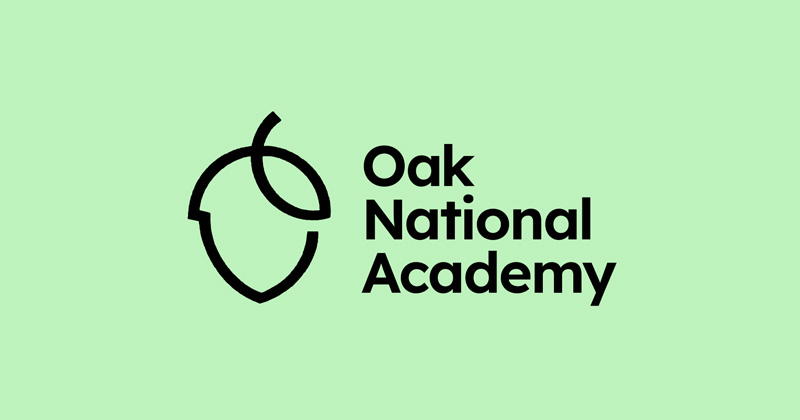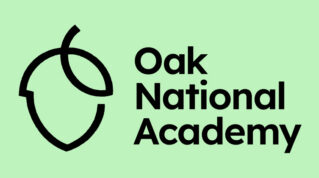Far fewer teachers used Oak National Academy last year, a new study has found, with most saying it had not cut their workload.
An evaluation report by ImpactEd found those using the website reported working fewer hours than teachers not using it.
But more than half of users said the arms-length curriculum body’s resources did not decrease their workloads.
“Alleviating teacher workload within lesson planning” is a key strand of Oak’s 2022-2025 strategy.
The report comes as the curriculum body launched a contract tender to develop new resources for 10 subjects which will be rolled out next autumn.
Curriculum materials and resources from its first procurement will be rolled out this month.
“Oak has always been a collaboration of teachers and experts sharing their knowledge and experience”, said its interim chief executive Matt Hood.
“Oak’s latest independent evaluation shows the impact of these resources on teachers.”
1. Oak usage has fallen since last year
As part of its evaluation, ImpactEd surveyed teachers via Teacher Tapp. It found that 93 per cent of teachers were aware of Oak in June this year, stable with 94 per cent in data from Teacher Tapp from January to June 2022.
But despite its familiarity, only 25 per cent of teachers surveyed this year said they used it, compared to 39 per cent last year – a fall of 14 percentage points.
In its report, ImpactEd said it assumed the fall was “linked to the reduced resource availability” following the end of Oak’s licensing agreements with some partners.
It meant a number of lessons and resources were taken down from the platform, with new lessons to be released this month.
Meanwhile, 72 per cent of those who said they used Oak would recommend it, compared to 77 per cent last year.
2. Teachers using Oak work fewer hours …
In its own survey between June and July this year, ImpactEd took responses from 1,305 participants – 65 per cent of which were current Oak users, and 35 per cent of which were not.
For questions which compared both users and non-users, it surveyed responses from a matched group of 429 pairs of respondents.
Oak users reported working a mean of 31.5 hours compared to 42 hours a week for non-users. The government’s working lives of teachers survey published earlier this year found the average teacher working week was 48.7 hours.
ImpactEd did not distinguish between full and part-time workers in its own survey, meaning it could not compare its results to national benchmarks.
It also found that those who used the platform more frequently spent fewer hours on activities related to their job per week.
Those who used Oak at least once a week spent 26.4 hours on job-related activities, versus 41 hours for those who used it once a month or less.
Senior leaders may have seen the biggest saving – with those who used Oak spending 15.1 hours less time on average on activities related to their job than those who didn’t.
3. … but spend more time on lesson prep
The most common use of Oak was for lesson planning (37 per cent of users), but Oak users reported spending more time than non-users on lesson planning and preparation.
This was an average of 10.7 hours in the most recent full working week, compared to 8.8 hours for non-users.
But ImpactEd said the “apparent contradiction” was “not statistically significant”.
It added that more research was needed to “understand the reasons” for the gap, such as whether Oak users were more likely to be part-time workers and whether the length of time individuals have used Oak “affects this outcome”.
4. Most teachers say Oak didn’t cut workload
Just 40 per cent of users said the platform had decreased their workload, with an average saving of four hours a week.
This compares with 42 per cent of users last year reporting that Oak saved them time (an average of three hours a week).
The majority – 54 per cent – said using it had not impacted their workload. Another 6 per cent said Oak had actually increased their workload, with an average of 7 hours reported as being added per week.
But ImpactEd said because this group of respondents was small (55), it was “not possible to draw any conclusions from more detailed subgroup analysis”.
5. Resources often need to be adapted
ImpactEd also conducted focus groups and interviews with 28 participants. During the groups, teachers said Oak was “a good starting point for curriculum development” but “adaptation” was important.
They also told researchers that while they could spend more time on feedback, assessment and supporting pupils by using Oak, the time savings it offered had fallen over time.
This was because there was “less acceptance” of using Oak without adapting resources in the sector. One teacher quoted in the report said having to adapt and edit resources “was almost as time consuming as creating them from scratch”.
Many Oak users said they’d used it to swap or add lessons (43 per cent) to curriculum, and just 6 per cent said that Oak’s curriculum had become their main curriculum sequence.
Participants also described Oak’s quality as “above average but below high quality”.
Asked to score the quality of its curriculum sequencing and structure, as well as its teaching resources on a scale from 1-5 (one being very low), the average score was 3.65.
The most commonly stated reason non-users gave for shunning the platform was that they already had “lots of resources” and thought it was “suitable for emergency use only”.
6. ‘Pupils fatigue setting in’
The report also found pupils’ willingness to engage with Oak’s resources had fallen in some cases.
“Multiple focus group participants talked about a sense of pupil fatigue setting in with regards to Oak resources,” it said.
One teacher reported that during cover lessons, if an Oak lesson is used “the behaviour of pupils declines”, while another talked about pupils “groaning” when seeing an Oak lesson.
Teachers told ImpactEd that rather than being a “reflection” of the resources, this was “more to do with an association with school closures and home learning”.
Oak users were still more positive about pupil performance than non-users. Users on average said 41% of their pupils were exceeding expectations, versus 29% of non-users.
But most participants were unable to give a specific example of how Oak had directly impacted progress because it is “often down to a wide range of factors”.















Your thoughts